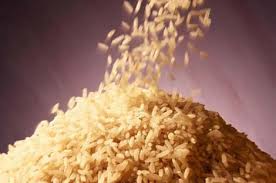Bangalore, December 16, 2013, DHNS: Rice millers on Monday began their indefinite strike in about 23 districts in the State to oppose the levy target fixed by the government.
The owners, irrespective of the variety of paddy they mill, downed the shutters in the Cauvery belt and in the Tungabhadra basin area.
There are about 1,800 rice mills across the State.
The millers and the government have been at loggerheads for the past three months over the higher levy rice collection target of 5 lakh metric tonnes till next March. The millers, in a year, have not given more than 1.5 lakh metric tonnes of rice to the levy pool. But the Anna Bhagya scheme has made the government scout for sources, one of which is the levy collection.
Paddy is grown in vast acres in Raichur, Bellary, Mandya, Mysore, Dakshina Kannada, Udupi and Shimoga districts, while Tumkur, Davangere and Belgaum have a good number of rice mills.
On Monday, there was near unanimity among the millers in registering their protest against the ‘unscientific’ levy target.
In Gangavathi taluk, nearly 38 mills closed their shops and held a meeting at the rice millers’ association office. N Suri Babu, president of the local rice mills’ union, said that in the past three decades, no government had ever been a burden on the millers. The maximum levy target set was 2.5 lakh metric tonnes, but this year, it has been 13.5 lakh metric tonnes and five lakh metric tonnes up to March.
He said the government had fixed Rs 1,600 as minimum support price for a quintal of paddy. Even for the paddy given to the levy pool, the same price is offered. This is nothing but exploitation of the millers, he said.
In Yadgir, farmers who had brought their produce to the mills could not unload their stock as mills were shut. In Raichur, as many as 125 mill owners have begun their strike. There are 70 to 80 mills in and around Raichur town. Not a single mill was functioning from the morning and even workers had not turned up. Banners were put up in front of the mills stating that they had been shut to oppose the upward revision in the levy target.
But farmers, unaware of the strike, were seen coming to the mill premises with lorryloads of paddy. They were allowed to unload the gunnysacks by the millers. A good number of mill workers are from Bihar, who get a daily wage of Rs 300 to Rs 400 besides two meals.
The scene was no different in Bellary. The millers said there should be no levy collection in areas where the Sona Masoori variety is grown. In addition to the MSP, incentives should be given for growing paddy. A memorandum to this effect, addressed to the chief minister, was submitted at the deputy commissioner’s office. There are no less than 150 mills in the district.
In Shimoga, 70 rice mills were closed. Karnataka Rice Mill Owners’ Association vice president H S Rudraswamy said the government had increased the target by nine times compared with last year. The government must come out with an achievable target and increase the levy price per tonne to Rs 2,650 from the present Rs 2,400. Till then the strike will continue, he added.
Davangere, a hub of rice mills, witnessed the heat of the agitation with all the 124 mills closing their businesses. Hulling and purchase of paddy from farmers too had come to a grinding halt. The paddy procurement in APMC market had also affected by the strike call.
Rice Millers’ Association general secretary N R Srinivas said that on an average, 25 lakh to 30 lakh MT of paddy is grown in a year in the State, while the rice output is 15 lakh MT.
“How is it possible to give 5 lakh MT to the levy pool? The government is under the wrong impression that 54 lakh MT of rice is produced in the State.”
Asked whether the government had called the striking mill representatives for talks, Srinivas replied in the negative.
Referring to the comment made by Food and Civil Supplies Minister Dinesh Gundu Rao that the government was ready to purchase paddy directly from farmers and get it processed, Srinivas said, “Even we suggest the same. Let the government purchase paddy from anywhere. We will do the processing. About 80 per cent of the rice grown in the State is ‘nice’ or Sona Masoori variety. We can’t sell it for Rs 22 a kg to the government when we can get at least Rs 6 to Rs 8 more in the open market. Why does the government want super fine rice for the Anna Bhagya scheme?”
When asked by reporters about the mills shutting down, Chief Minister Siddaramaiah, who is Delhi, said he had instructed two of his Cabinet colleagues to speak to striking mill owners.


1 Comment
Siddaramaiah’s decision gone wrong…now the other people have to pay more price for a kilo of rice. What on earth was he even thinking when this decision was made. Anyone who is elected to run a state should have a good foresight and make wise decisions. Instead this was a rash decision and now the other people have to suffer. It would sound so good that all the money comes out of Siddaramaiah’s pockets so that he understands what a common man feels.